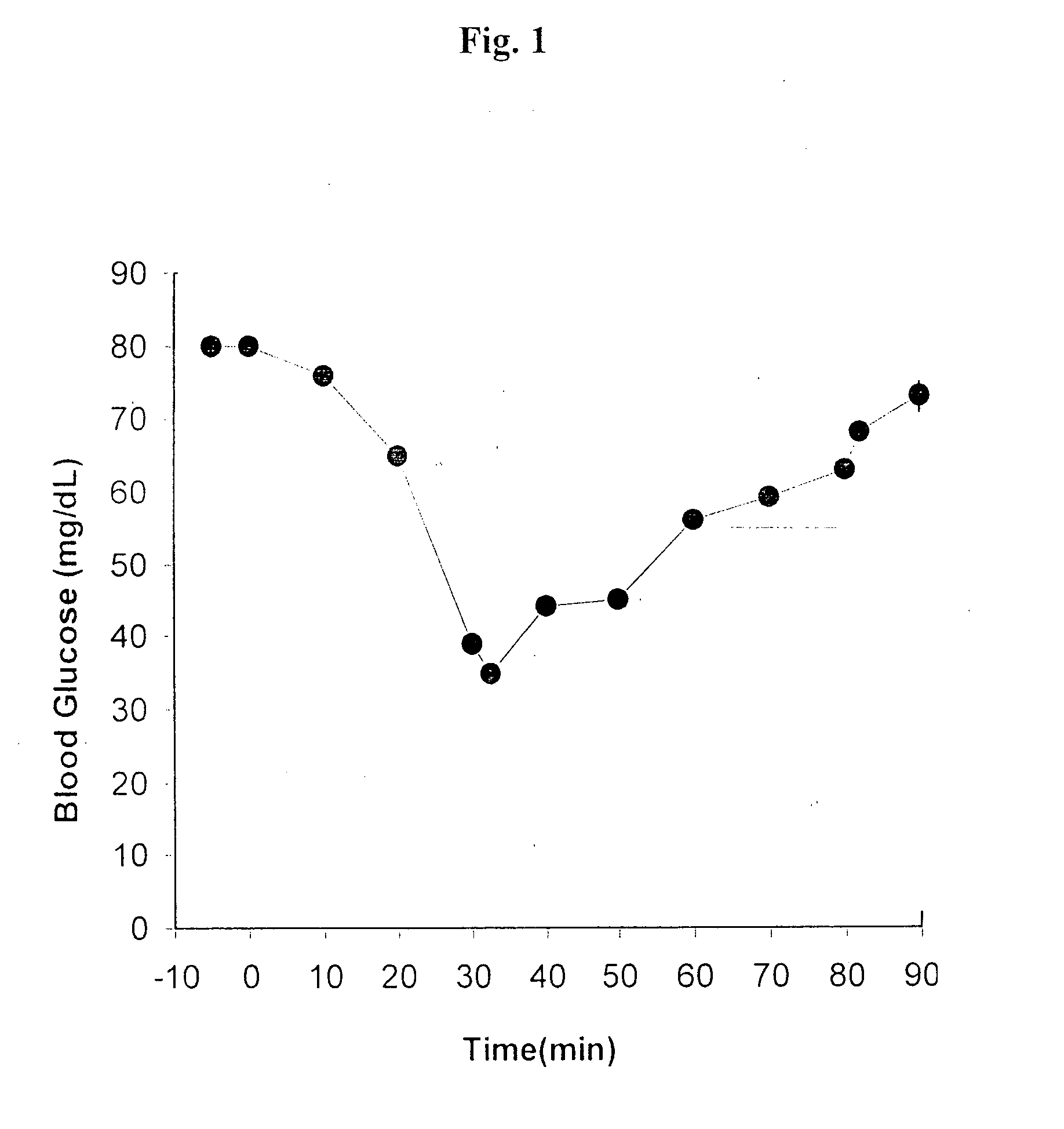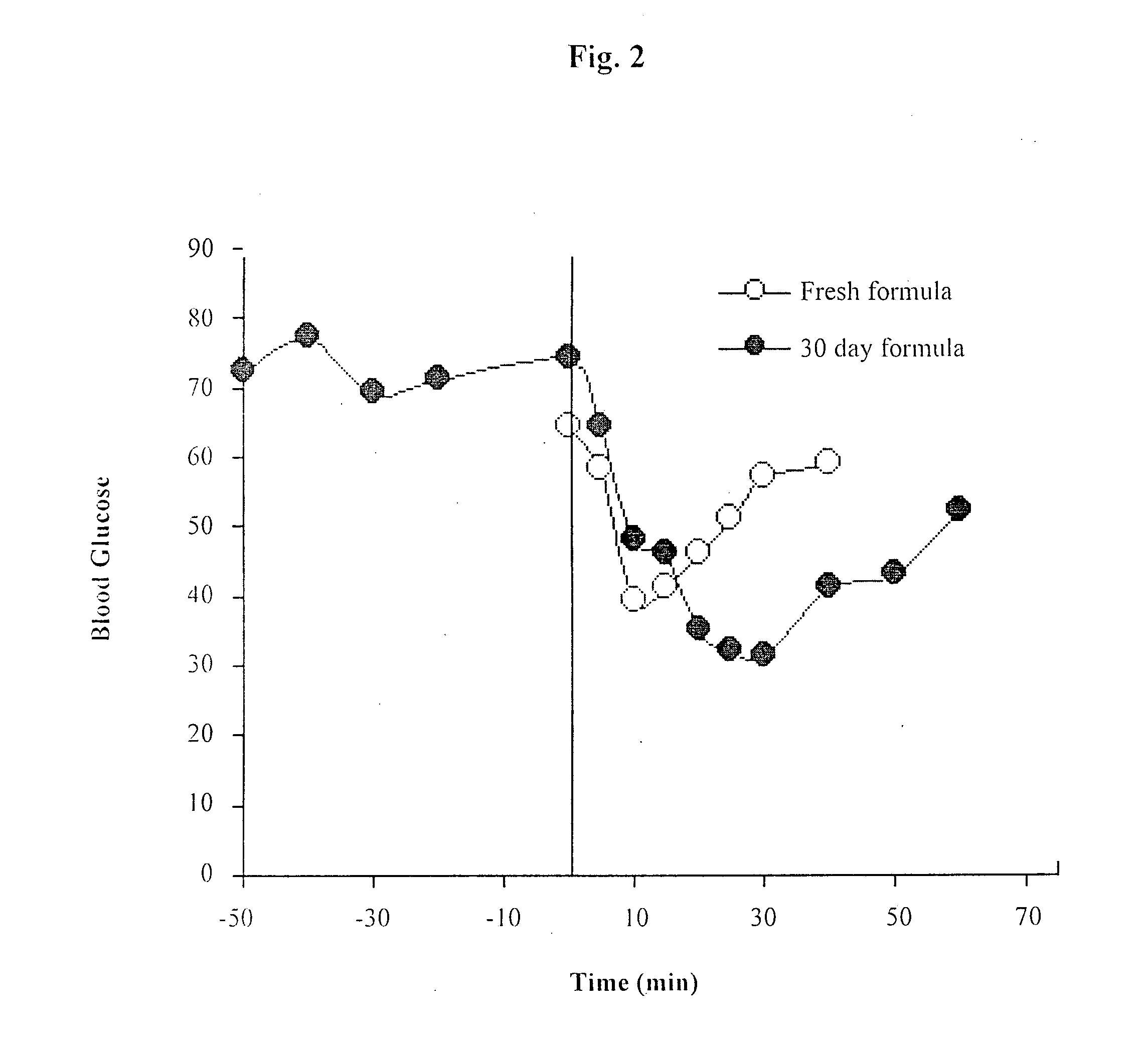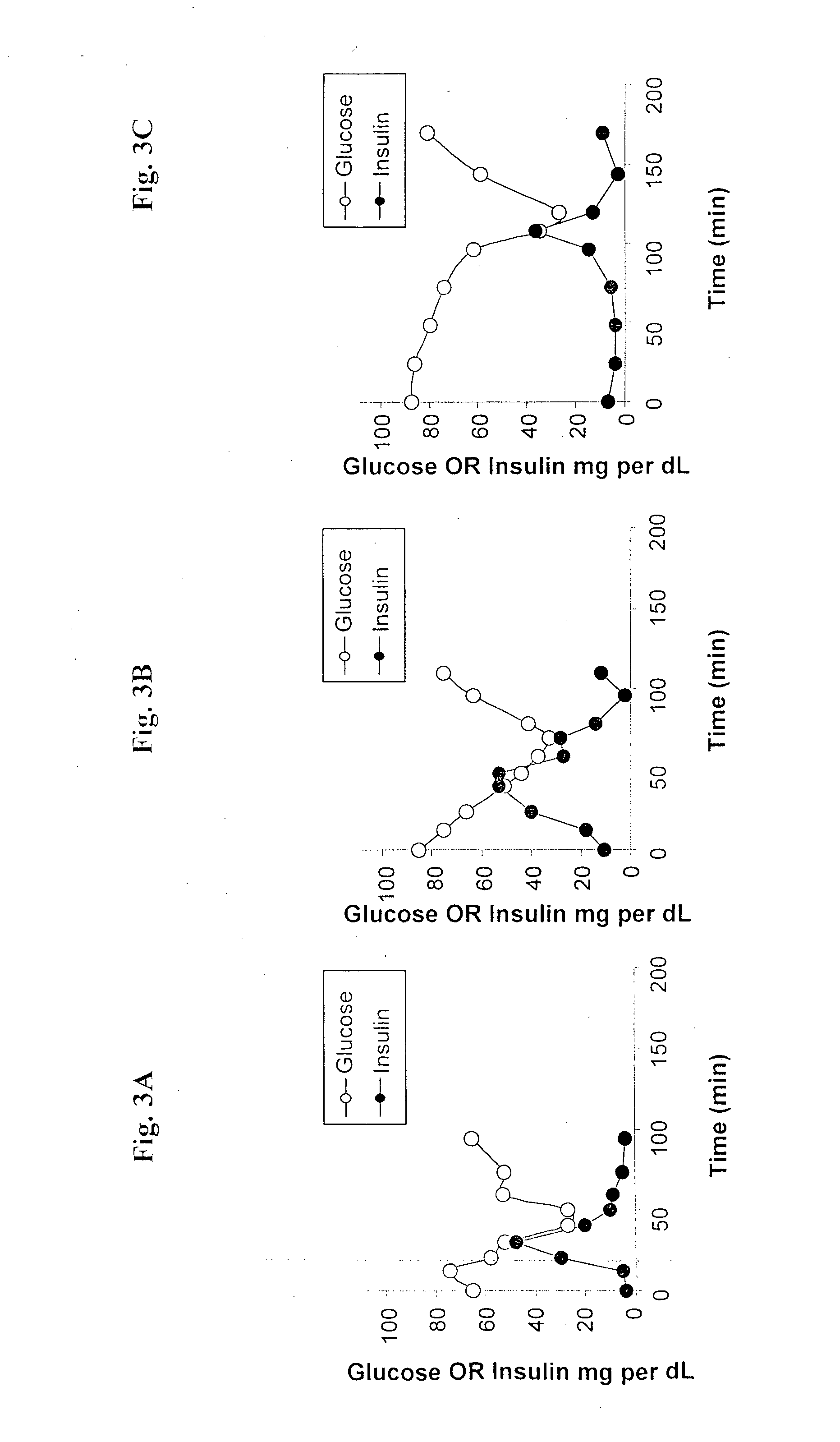Oral delivery of proteins and peptides
a technology of protein and peptide, which is applied in the field of oral delivery of therapeutic proteins, polypeptides and peptides, can solve the problems of low oral bioavailability, deactivation, and manufacturing of effective formulations, and achieve the effects of avoiding the need for refrigeration during storage, facilitating drug release, and increasing the bioavailability of proteins
- Summary
- Abstract
- Description
- Claims
- Application Information
AI Technical Summary
Benefits of technology
Problems solved by technology
Method used
Image
Examples
example 1
Spray Freeze-Dried EDTA / SBTi Beads
[0065]Materials: SBTi type II-S (Trypsin inhibitor from Glycine max (soybean), Sigma-Aldrich, Saint Louis, Mo., USA); 5% (w / v) EDTA solution (Sigma-Aldrich, Saint Louis, Mo., USA); PBS (phosphate-buffered saline, 0.2M, pH 7.2).
[0066]A solution of SBTi type II-S in PBS (1.5 ml for 100 mg SBTi) was prepared by stirring with Teflon®-coated magnetic stirrer until a clear yellow solution was obtained. EDTA solution (5% w / v; 1.5 ml containing 75 mg EDTA for 100 mg of STBi) was added. The pH level was adjusted to 7.2 with PBS. The EDTA / SBTi solution was injected at a constant flow of 0.4 ml / min to a pneumatic nozzle (Nisco Encapsulation Unit Var J1 SPA00336, Nisco Engineering Inc., Zurich, Switzerland), which created droplets of 600 μ-1500 μ in diameter depending on air velocity. The droplets fell into an isolated bowl, containing liquid N2 (−196° C.), and immediately froze to form solid beads. The frozen beads were placed in a freeze drier. After 48 hours...
example 2
Spray Freeze-Dried Insulin Beads
[0069]Materials: Eudragit® L30 D55 (Degussa Rohm Pharma Polymers, Rohm GmbH & Co. KG-Kirschenallee, Darmstadt, Germany); human recombinant insulin Actrapid® (Novo Nordisk, Denmark); PBS (0.2M, pH 7.2).
[0070]To an Eudragit® L30 D55 aqueous suspension (pH 2.6), an equal amount in weight of NaOH 1N was added to bring the pH value closer to the physiological value. The NaOH created a gel, which was broken to a viscous solution due to an aggressive stirring with a Teflon-coated magnetic stirrer. PBS was added to bring the solution pH to a physiological pH and to lower the viscosity of the solution. Alter obtaining a clear solution with pH 7.2, insulin solution (100 UI=3.5 mg insulin for 35 mg Eudragit) was added and the solution was stirred mildly. The new insulin solution was drawn with a syringe that was placed in a syringe pump, which controlled the flow rate of the solution. The insulin solution was injected at a constant flow of 0.4 ml / min to a pneuma...
example 3
Preparation of Insulin-Eudragit Beads [N.I.S1]
[0071]Materials: A solution was prepared to compose of: Insulin (Actrapid® (Novo Nordisk, Denmark): 3-7% (weight / weight); Eudragit L30D55: 80-30%; PBS 0.2M: 0-40%; NaOH 1N: 1-2%. Whenever Eudragit is mentioned below, it is meant to refer to Eudragit L30 D55.
[0072]Preparation of the solution: To Eudragit aqueous suspension in a beaker, NaOH (1N) solution was added (150% weight of Eudragit weight), followed by PBS to adjust the pH to 7.2 (about 6.5 the volume of NaOH). Insulin was added and the solution was sprayed into liquid N2 (−196° C.) to form beads. The size of the beads varied from 400 μm-2000 μm. The beads were dried in a lyophilizer for 48 hours, with shelf temperature of 20° C. and down to −30° C. The resulting beads have a ratio of insulin:Eudragit from 1:5 and up to 1:20 (dry matter). The dissolution times of the beads range from 30 sec up to 360 sec. The dissolution time depends on the drying shelf temperature.
PUM
| Property | Measurement | Unit |
|---|---|---|
| diameter | aaaaa | aaaaa |
| diameter | aaaaa | aaaaa |
| temperature | aaaaa | aaaaa |
Abstract
Description
Claims
Application Information
 Login to View More
Login to View More - R&D
- Intellectual Property
- Life Sciences
- Materials
- Tech Scout
- Unparalleled Data Quality
- Higher Quality Content
- 60% Fewer Hallucinations
Browse by: Latest US Patents, China's latest patents, Technical Efficacy Thesaurus, Application Domain, Technology Topic, Popular Technical Reports.
© 2025 PatSnap. All rights reserved.Legal|Privacy policy|Modern Slavery Act Transparency Statement|Sitemap|About US| Contact US: help@patsnap.com



